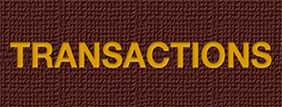Analysis of extensometer, photogrammetry and laser scanning monitoring techniques for measuring floor heave in an underground limestone mine
Transactions of the Society for Mining, Metallurgy, and Exploration
, 2018, Vol. 344, No. 1, pp. 31-37
Slaker, B.A.; Murphy, M.M.; Miller, T.
DOI: https://doi.org/10.19150/trans.8746
ABSTRACT:An underground limestone mine in eastern Ohio was experiencing significant floor heave and roof falls, attributed to high horizontal stresses. Areas of the mine showing floor heave were monitored with roof-to-floor extensometers and photogrammetry surveys to determine the rate and magnitude of heave. Extensometer data were recorded hourly at four locations across adjacent entries while photogrammetry surveys of the floor were performed at the same locations every two to five weeks. A final survey was performed using an I-Site 8200 laser scanner. Following instrumentation, floor heave up to 10.1 cm (4 in.) was measured by the extensometers, photogrammetric reconstructions and laser scanner over a six-month period. The extensometers were biased by the location where they were placed, failing to consistently capture the location and extent of floor heave and cracking. The photogrammetry surveys were not precise enough to capture small magnitude movements. Mining in the area was halted and within several months the floor movement and incidence of roof falls were significantly lessened.





